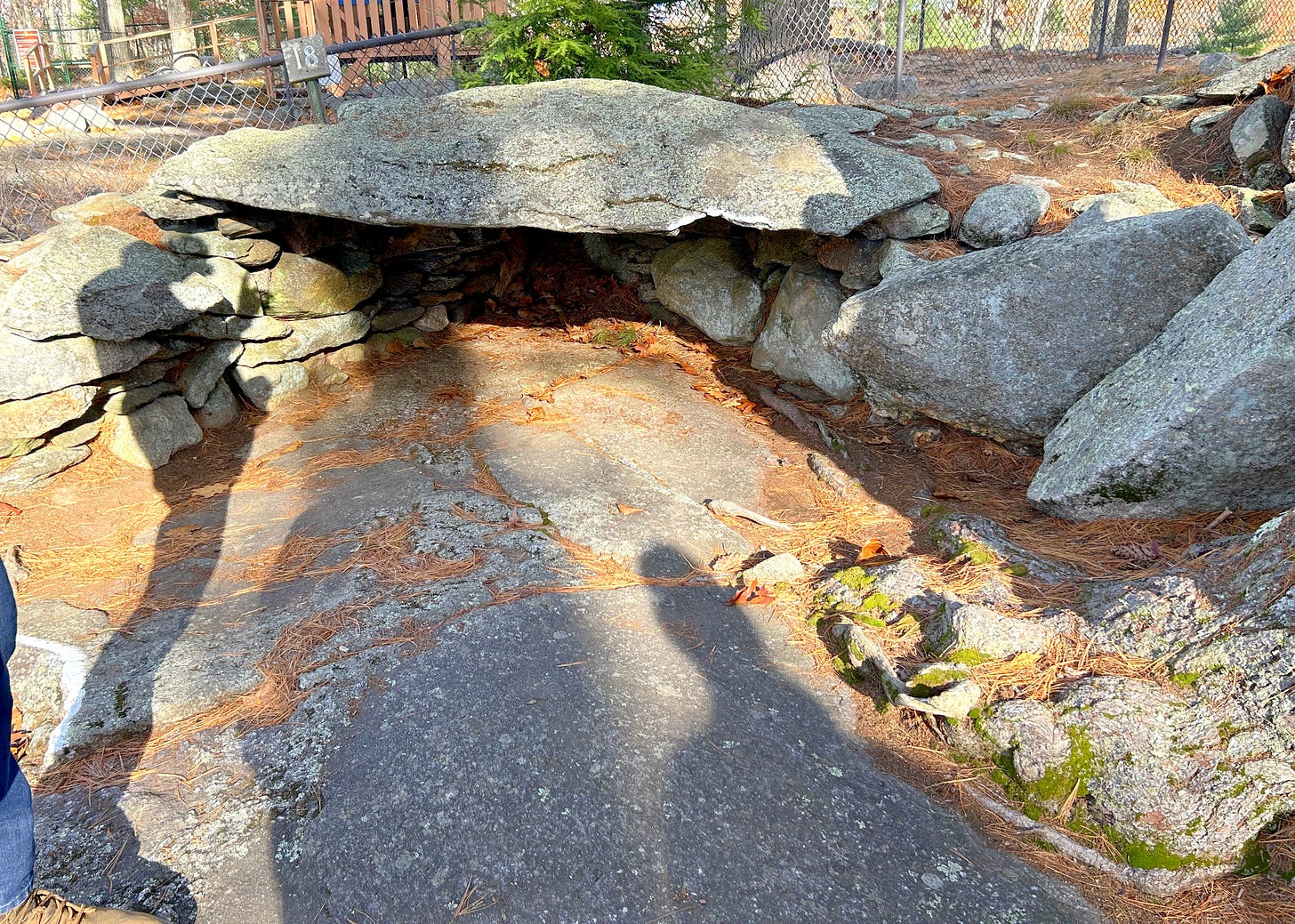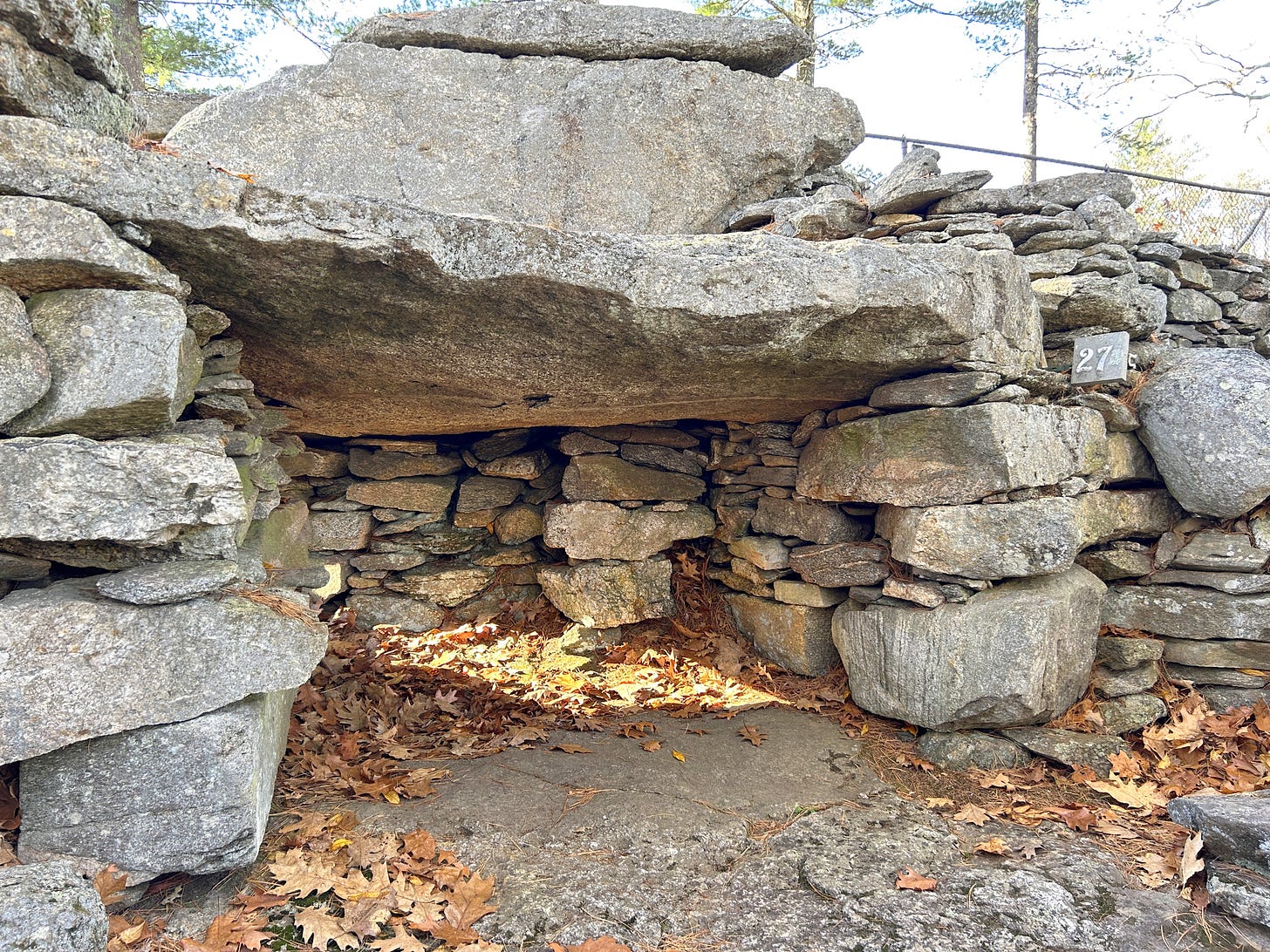Visiting "America's Stonehenge" in New Hampshire - Part Three
At The Heart of A Prominent New England Stonework Site
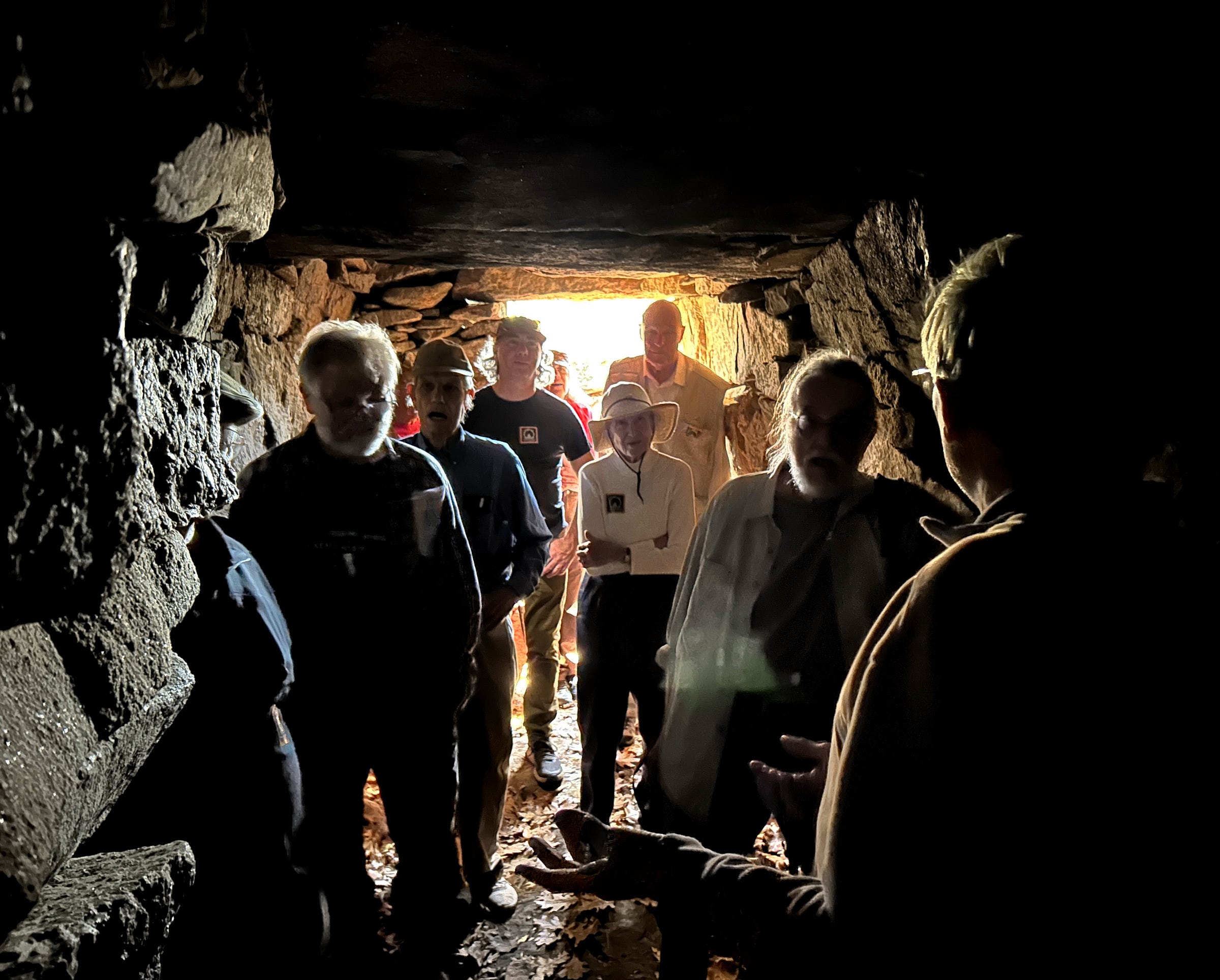
America’s Stonehenge is open to the public. Learn more at https://www.stonehengeusa.com/
Read Part One Here. Read Part Two Here.
The experience at the top of the hill is kind of… intense?
This has to have been something.
Doesn’t it?
Perhaps there’s some primitive instinct which sees so much stonework in such concentration and demands that it must be “something”.
Is that, perhaps, the “mystery” on this hill? The unconscious impact the concentrated sight of all this stonework has upon us? Triggering something deep within? Is that why some are stirred to such a sense of Wonder?
Whatever the cause, impacts reverberate still. The impression this place made on people — and continues to make — helped launch and sustain the very organization whose Anniversary Conference brought me to the site, an apt location for a Field Trip on the occasion. And a fitting way to begin a weekend-long reflection on the fascinating history of the researchers and research into New England’s ancient stonework, including how they fit into a larger tapestry of antiquarian pursuits and amateur archaeology.
NEARA — New England Antiquities Research Association — (NEARA.org) — and its members — have been at the center of much of this research work since the group’s founding 60 years ago, in 1964, by Robert Stone and friends. This visit to America’s Stonehenge was one of three Field Trip options which opened NEARA’s Fall 2024 Conference — Celebrating the organizations 60th Anniversary.
Fascinated by New England’s ancient stonework, Robert Stone first began leasing this hilltop property in the mid-1950s, and became the owner shortly after founding NEARA. These days, his son Dennis Stone owns and oversees the unique stone site — once called Mystery Hill.
Dennis Stone welcomed our Field Trip full of NEARA Members to America’s Stonehenge on the Friday afternoon of the NEARA Fall 2024 Conference celebrating NEARA’s 60th Anniversary. Stone gave a personal presentation on the founding of the organization, and then conducted a guided tour of the site, some of which has been covered in earlier installments.
NEARA’s Terry Deveau would later give a presentation at the Conference on notable 19th-20th Century Antiquarian William B. Goodwin. Deveau has been studying Goodwin for years. Goodwin was a retired insurance executive, an Antiquarian, and the owner of the Mystery Hill site for a time in the years before the Stone Family acquired it.
Though Deveau and Stone both presented positive assessments of Goodwin, one of the problems with trying to figure out who built the stonework at Mystery Hill and when they built it is that Goodwin had some controversial “Restoration” work done to the hilltop stonework in the 1940’s when he owned the property. He and Malcom Pearson restored stonework which had fallen down into disrepair. Pearson would later come to own the site after Goodwin, before the Stones.
How much did Goodwin and Pearson change the stonework? Accounts vary. The degree to which they rebuilt the site is disputed, with some saying they engaged in wholesale reconstruction and others insisting the amount of work done was exaggerated. There’s also argument on the degree to which Goodwin’s hope that the stone constructs were ancient Irish ruins influenced the rebuilding.
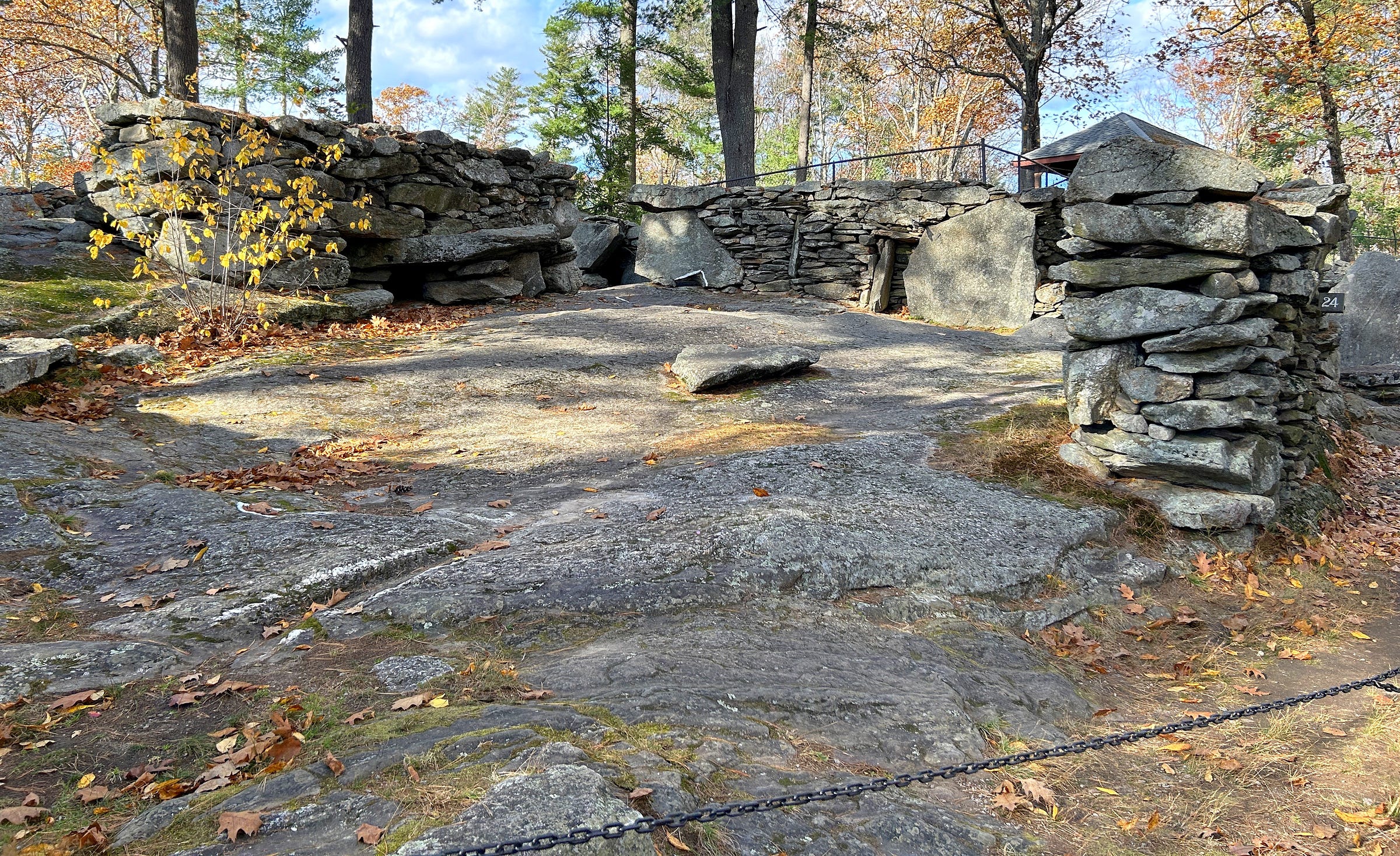
Though I’d learn a little more about William Goodwin at the Conference, I was already somewhat familiar with the controversies surrounding his reconstructions at America’s Stonehenge prior to my visit to the site. Having read and watched a few different assessments of America’s Stonehenge and its stonework, I was curious what my own reaction would be, what impressions I’d receive. This was my first visit and, despite what I’d heard or read before, I tried to approach the site with an open mind.
As I’ve alluded to in my earlier installments, my initial impression was one of layering and blending, of a mix of stonework from different times, with several layers of creation and manipulation represented.
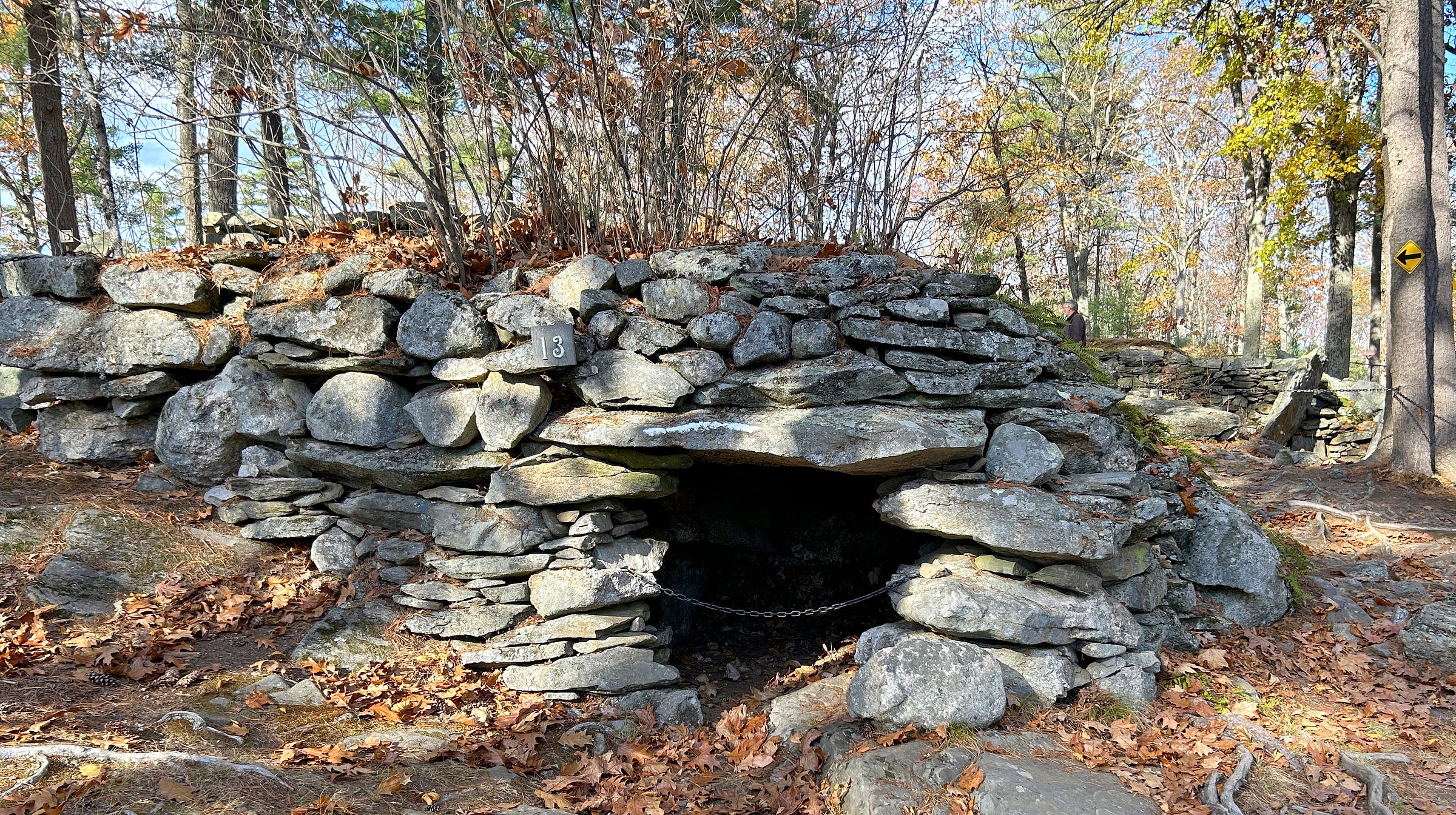
It is likely the outer-lying stonework is some of the oldest at the site, like the old stone rows with their “windows” from Part One, for example. As mentioned in Part One and Part Two, and suggested by Researcher Mary Gage, it’s likely there are several further Indigenous layers of stonework development atop and alongside this.
Also in Part Two, we saw layers of adaptation and new work the 17th - 18th century settlers built using older, re-purposed stonework in the Pattee Family Area. It’s likely they also changed or built some of the stonework higher up on the hill, as local records mention they had poor folks staying up in their old “caves”. It’s also said the area was used to hide people fleeing enslavement on the Underground Railroad prior to the U.S. Civil War.
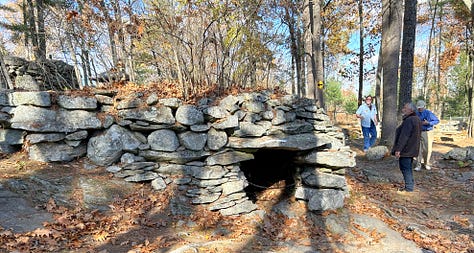
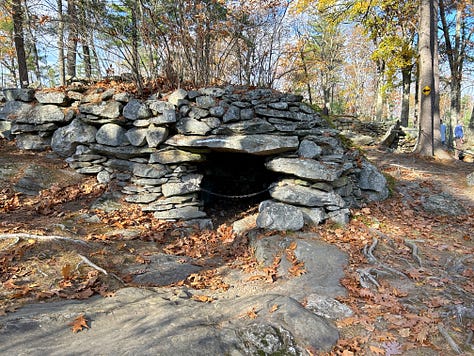
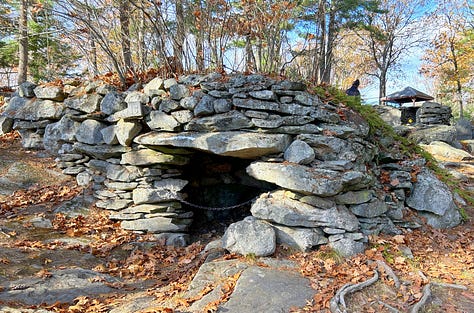
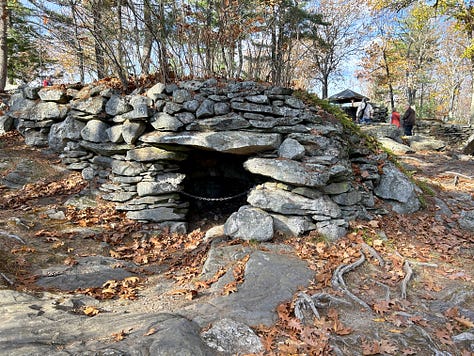
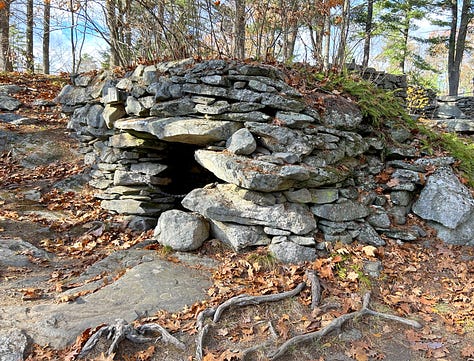
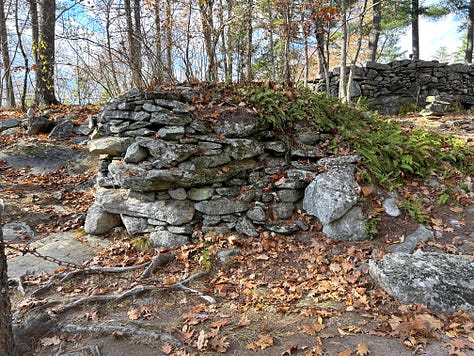
Finally, there’s the antiquarians reconstruction layer, Goodwin and Pearson’s work from the 1940’s and 50’s to rebuild and restore what they found at the site based on their preconceived ideas and assumptions. To my eyes, their well-intentioned if misguided work stands out in two ways:
First, in the squared-off edges and flat tops of the stone walls and other assemblages near the hilltop — Western or European inspired stonework appears generally flat and orderly and often mimics the 1-over-2 coursework of brick or block work. Indigenous Stonework generally appears more organic and flowing, its coursework more dictated by its design.
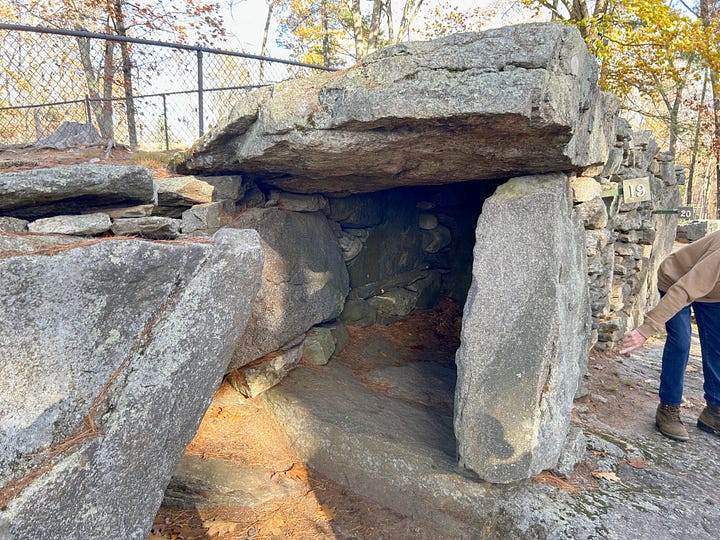
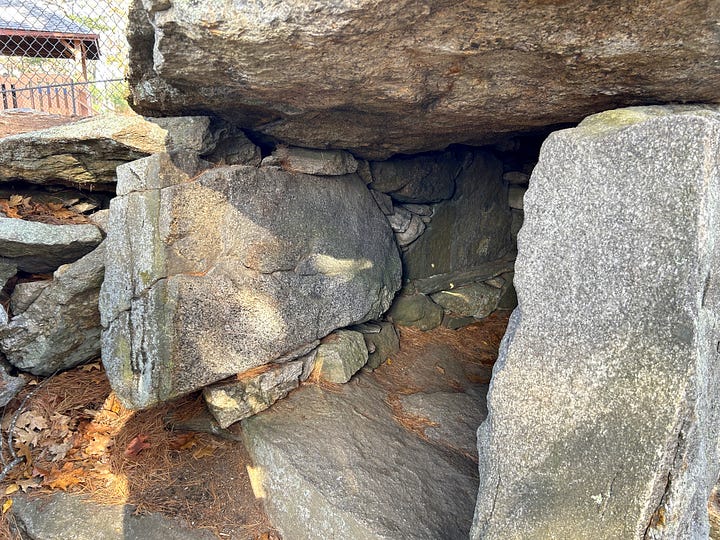
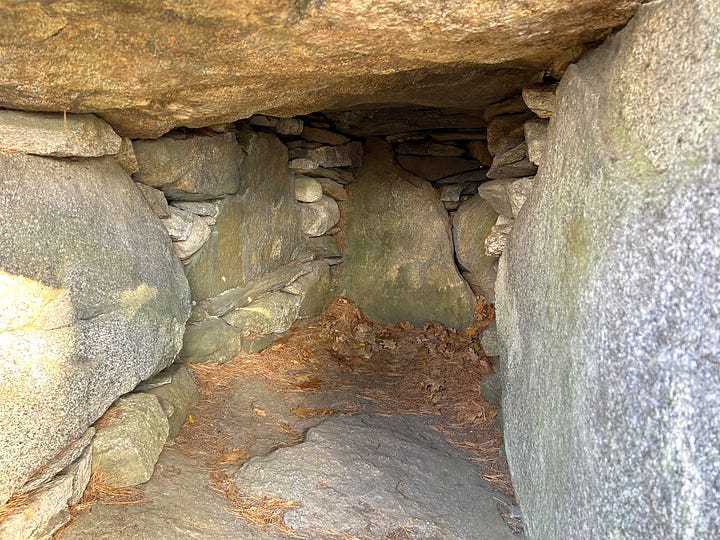
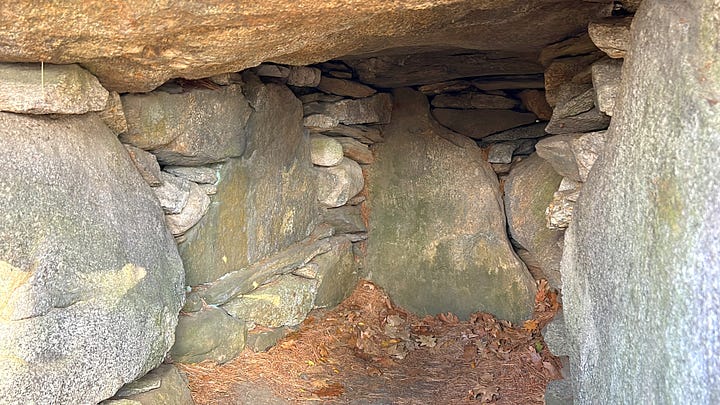
Second, which, I think, speaks to their good intentions — In some places we see organic coursework “tamed”, so to speak, and some of the original, flowing design still lingers in the now squared-off, restored stonework. In this, it would seem an attempt was indeed made to simply lift the stones from where they fell and place them back up into their proper places, as if re-assembling a puzzle, as some contend Goodwin and Pearson did.
But the overall squared-off, flat construction serves as its own sort of physical manifestation of the limitations inherent in their perceptions of the site.
This is above and beyond the obvious and somewhat dubiously placed “Standing Stones”. There are some on the hill which appear to have benefited from reconstruction with a Eurocentric interpretation of where they “belong”. But this is not to suggest that all stood-up stones at the site are necessarily late additions, and certainly not the ones in stone rows outside of the hilltop area, which are likely what’s left of some of the oldest layers.
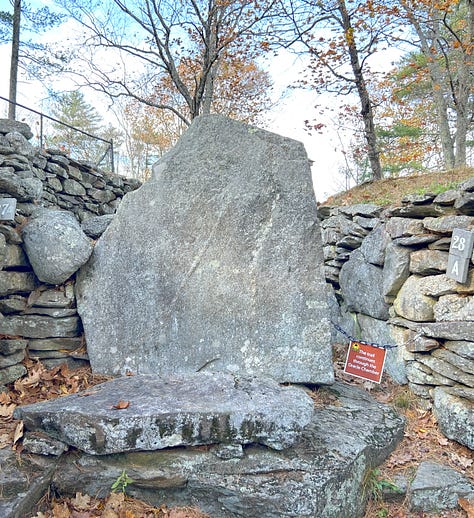
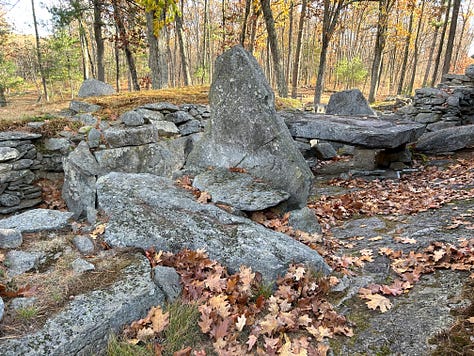
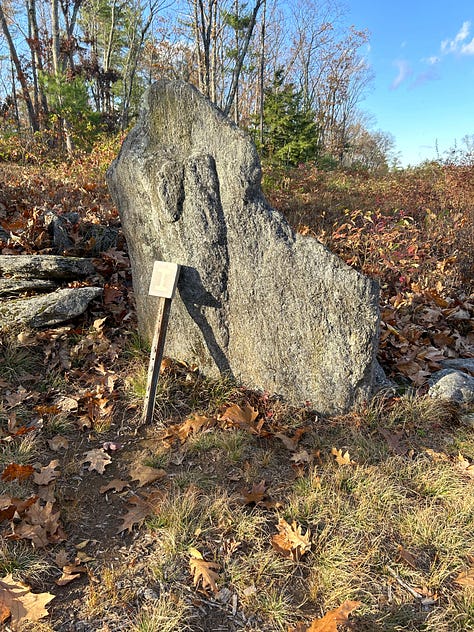
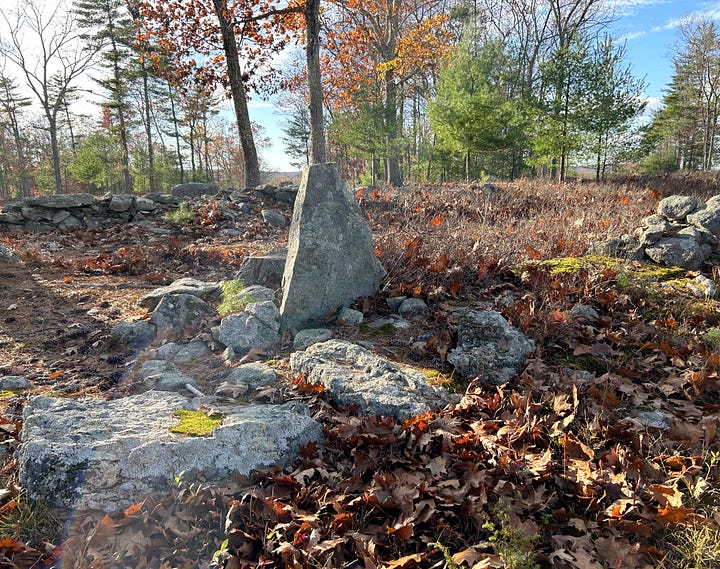
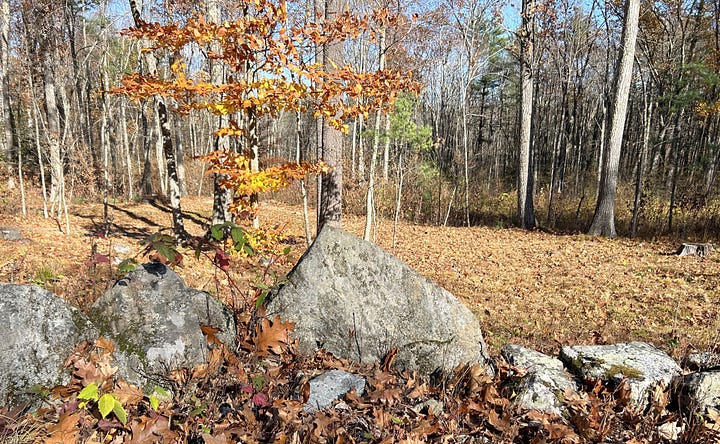
That most recent layer, though... It almost feels like too much. Like they did too much then for us to see past it now. Parts of the hilltop stonework remind me of the Stone Follies stone masons build in the gardens and backyards of wealthy clients, fanciful castle walls, spirals, mazes and faux-medieval courtyards. It’s awesome, but… there is an artifice to it.
And, yet… still… despite this?
It seems like you can see past their restoration work, in some instances. There are older layers, still visible in the background in places. The restoration work was also focused on the hilltop, which is why the more-outlying stonework is likely less altered.
Given the disturbances caused by the reconstruction here, however, I’m not sure mainstream archaeology and anthropology will ever be willing to attempt to look past that work to determine any older provenance to the stonework at this site. That doesn’t slow the research efforts of Dennis Stone and his people, including America’s Stonehenge’s General Manager James Lacefield. Research into the origins of the stonework here continues.
Public interest in the site hasn’t waned. Three school buses were carting away kids from their field trip as we twenty-or-so NEARA Members were arriving for ours. School field trips come through regularly, Lacefield told me, though he said this one was likely the last of the fall season. Although, it was 70 degrees that November 1st, making it difficult to conceive of the day as a step towards Winter.
Wandering the site, the weirdly warm weather recalled H.P. Lovecraft, “…The autumn heat lingered fearsomely…” — from Nyarlathotep — and I recalled the work of a researcher or two who’d suggested Lovecraft could have been here. Maybe? A somewhat remote possibility…
The rest of Lovecraft’s story, even that sentence, didn’t bode well, “…and everyone felt that the world and perhaps the universe had passed from the control of known gods or forces to that of gods or forces which were unknown.”
Which, I suppose, brings us to the “Sacrificial Table”…
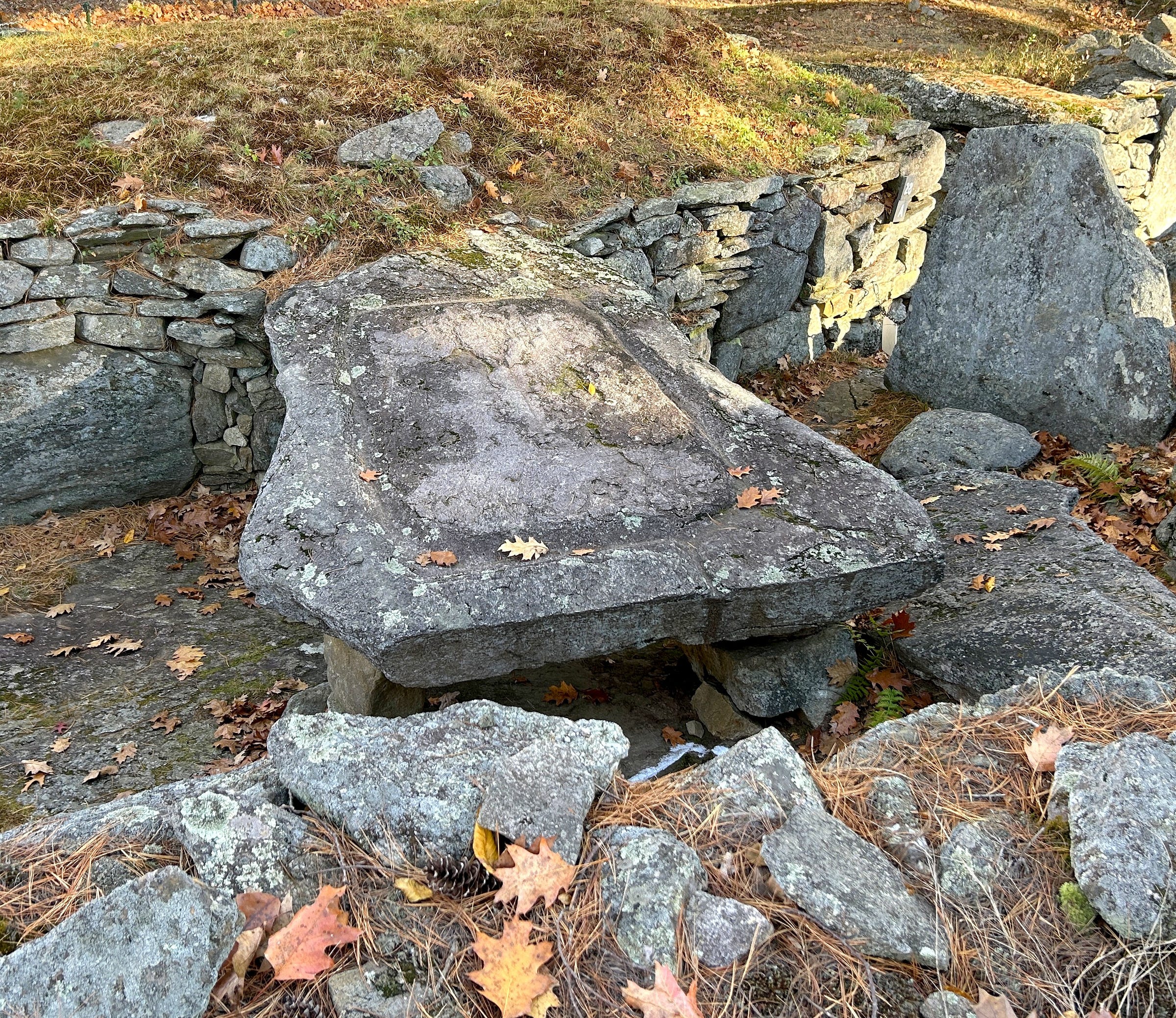
The flat, rectangular stone has been stood up horizontally like a table, the upward-facing side inscribed around its surface with a deep groove, parallel with the outer edge. One short side abuts the wall of a stone chamber, the other three sides are open.
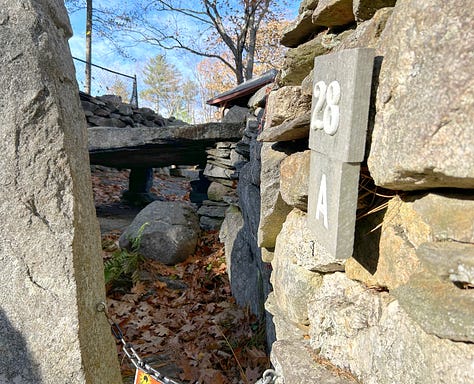
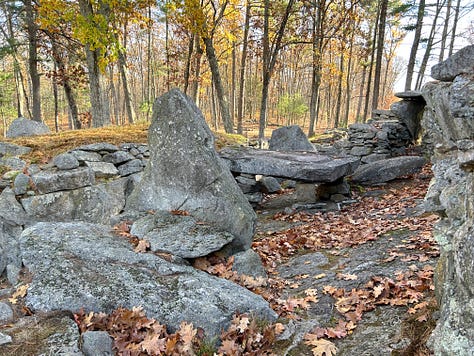
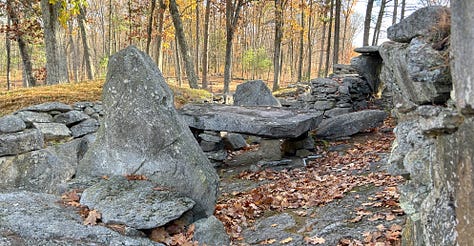
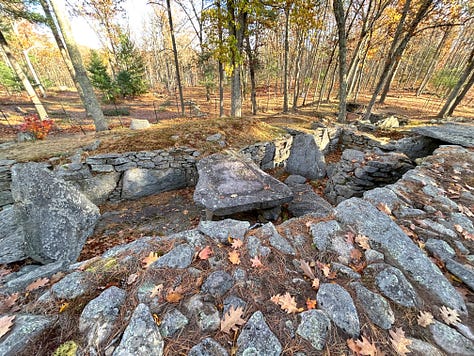
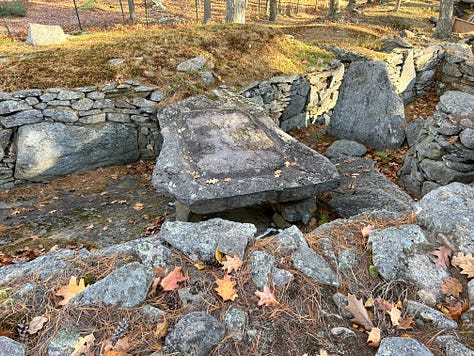
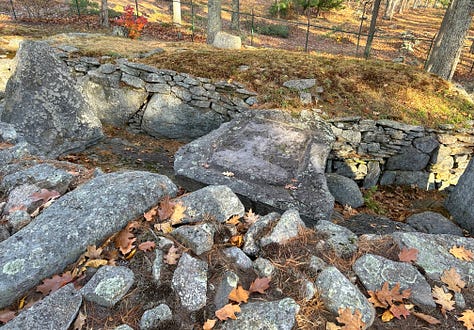
Hidden beneath the short Chamber side of the table is the slightly flared opening to a small, squarish passageway that cuts through the entire thickness of the chamber wall. It’s said that when someone inside the chamber speaks into the passage, it’s carried, some say amplified, by the properties of the passageway to those outside around the table, who’d hear you as some kind of disembodied voice.
That’s why they’ve named the abutting stone chamber The Oracle Chamber. In the photo at the beginning of this piece, you can see Dennis Stone describing this aural illusion to our NEARA group while standing next to the passageway inside of the Oracle Chamber.
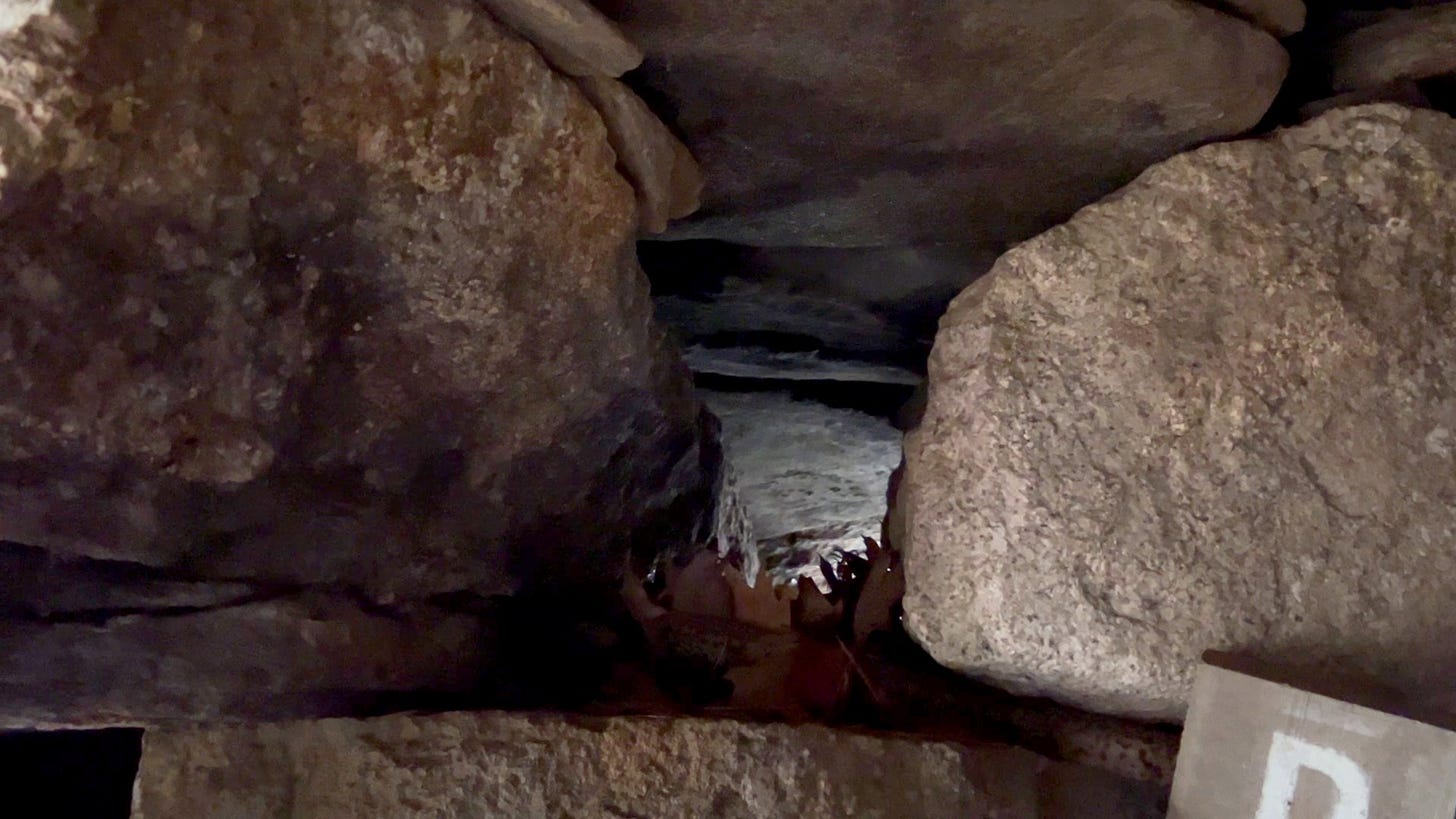
We couldn’t see this voice trick demonstrated, unfortunately, as they no longer allow visitors to approach the Grooved Table up close, after a vandal damaged the stonework a few years ago. A misguided, attention-hungry, religious and political extremist, some self-appointed QAnon savior, took it upon themselves to “do something” about — i.e. damage, ruin, or try to destroy — something which was supposedly a Satanic symbol in their conspiracy-minded little brain.
America’s Stonehenge did a good job restoring the stonework, based on what we could see. There was little sign of the vandalism remaining.
The Oracle Chamber is a large, T-Shaped Stone Chamber. The small voice passageway is roughly in the center of the top crossbar of the “T”. This “top crossbar” passage is open on the left side of the “T”, to an entry alcove, but closed-ended on the right. A now-open but once shuttered vent is open in the chamber roof above the closed right end.
Several small alcoves or niches are built into the chamber, along the top crossbar passage and at the end of the lower passage, whose exit is on the lower left side of the descending bar of the “T”. Also of note, there is a petroglyph, now highlighted, on a stone in the chamber wall opposite the lower passage exit.
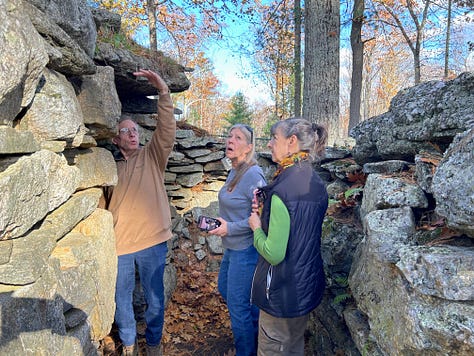
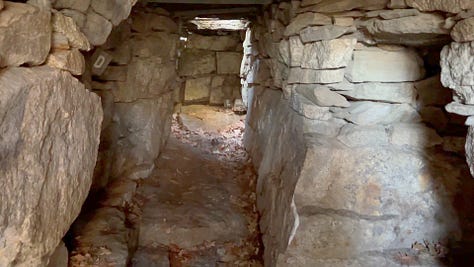
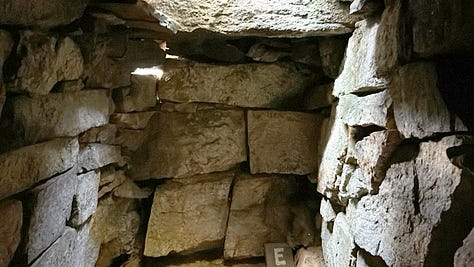
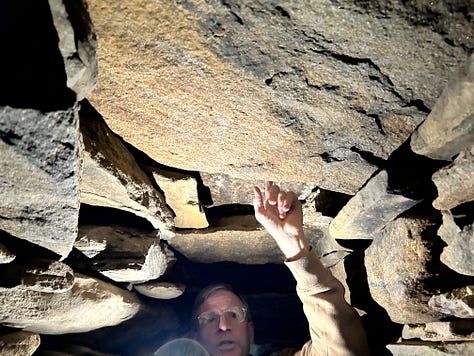
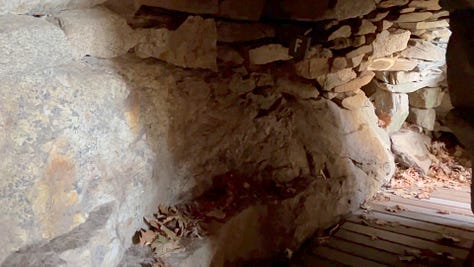
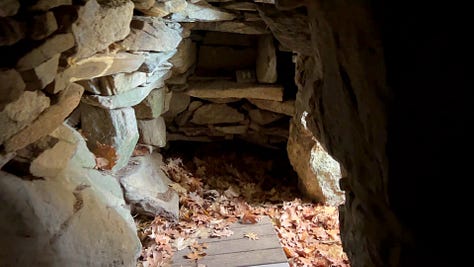
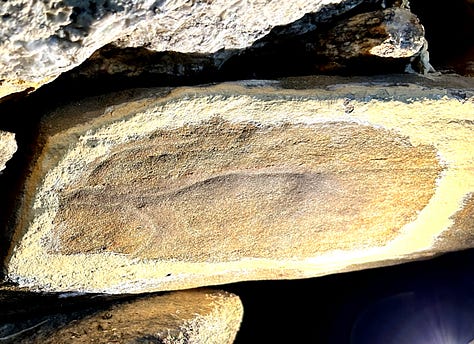
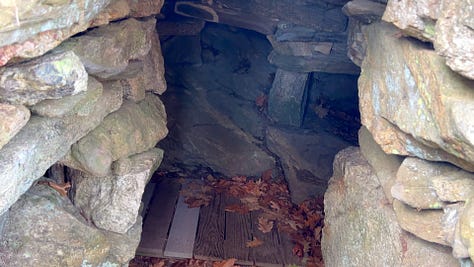
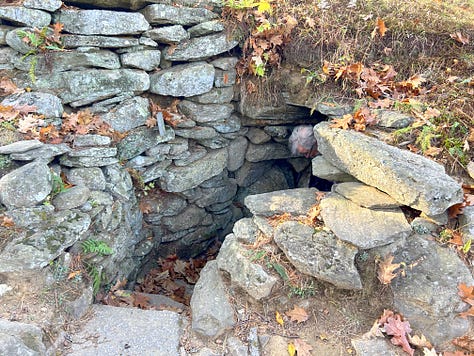
On the hilltop next to the Grooved-Top Table and Oracle Chamber, a Viewing Platform has been built so that visitors can look out around the hilltop and see the Alignment Stones and the proposed Solar and Lunar Alignments seemingly present in the encircling stone rows.
These apparent alignments using stonework inspired the name America’s Stonehenge — the idea wasn’t that the stonework here looked like the stonework at the original Stonehenge, but rather that it functioned in an astronomical sense in a similar fashion as the stonework at the original.
Though I’m not a fan of using European terms to describe possible Indigenous work, I can understand how the name serves as an explanatory shortcut describing the site’s larger function. And given the hilltop’s restored and reconstructed — and blended — history, maybe it’s best not to worry too much about what it’s called, especially if the name keeps the visitors coming and paying the bills, and allows Stone and company to keep preserving the stonework here, whoever put it together.
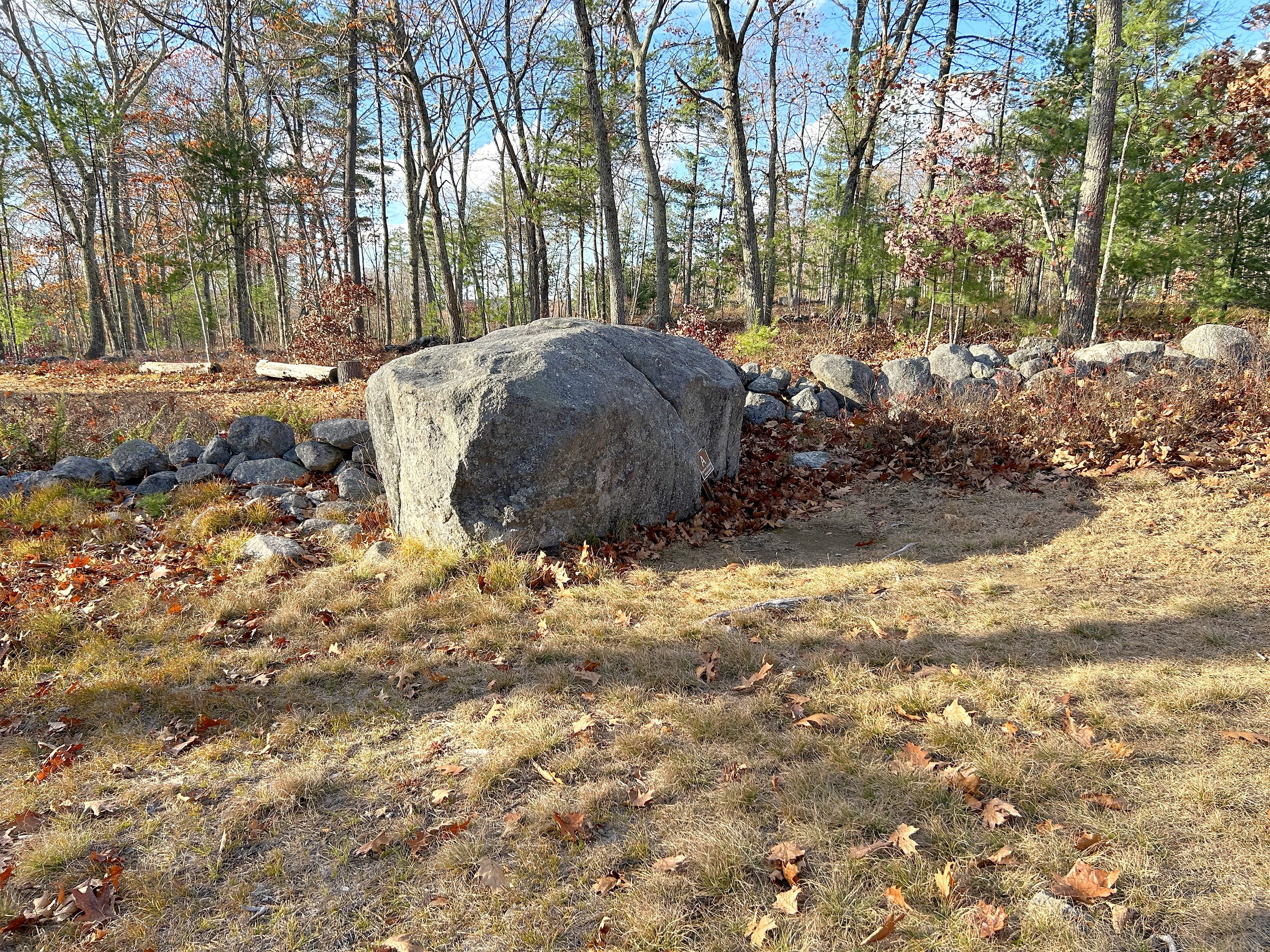
Earlier this year, Dennis Stone released a book of his own on the history of the site, America’s Stonehenge: The Stone Ruins of New Hampshire, with James Lacefield and Katherine Stone. I’ve not yet had the chance to read it, but look forward to doing so. Dennis was a great guide who obviously knows the site inside and out. Once again, he deserves enormous thanks for his gracious hosting of our NEARA Field Trip.
If you’d like to learn more about NEARA — New England Antiquities Research Association — head to NEARA.org. You can learn more about America’s Stonehenge at https://www.stonehengeusa.com/.
These three articles on our NEARA Field Trip to America’s Stonehenge are free, shared non-commercially for educational purposes. I hope you’re reading this third one for free on my Substack and not on some pirate site that charged you. Interested in New England’s ancient stonework? Please consider becoming a Free or Paid Subscriber to this Substack “Newsletter” for access to all my articles and videos.
Thanks for reading!





